Camera traps have been a key part of the conservation toolkit for decades. Remotely triggered video or still cameras allow researchers and managers to monitor cryptic species, survey populations, and support enforcement responses by documenting illegal activities. Increasingly, machine learning is being implemented to automate the processing of data generated by camera traps.
A recent study published showed that, despite being well-established and widely used tools in conservation, progress in the development of camera traps has plateaued since the emergence of the modern model in the mid-2000s, leaving users struggling with many of the same issues they faced a decade ago. That manufacturer ratings have not improved over time, despite technological advancements, demonstrates the need for a new generation of innovative conservation camera traps. Join this group and explore existing efforts, established needs, and what next-generation camera traps might look like - including the integration of AI for data processing through initiatives like Wildlife Insights and Wild Me.
Group Highlights:
Our past Tech Tutors seasons featured multiple episodes for experienced and new camera trappers. How Do I Repair My Camera Traps? featured WILDLABS members Laure Joanny, Alistair Stewart, and Rob Appleby and featured many troubleshooting and DIY resources for common issues.
For camera trap users looking to incorporate machine learning into the data analysis process, Sara Beery's How do I get started using machine learning for my camera traps? is an incredible resource discussing the user-friendly tool MegaDetector.
And for those who are new to camera trapping, Marcella Kelly's How do I choose the right camera trap(s) based on interests, goals, and species? will help you make important decisions based on factors like species, environment, power, durability, and more.
Finally, for an in-depth conversation on camera trap hardware and software, check out the Camera Traps Virtual Meetup featuring Sara Beery, Roland Kays, and Sam Seccombe.
And while you're here, be sure to stop by the camera trap community's collaborative troubleshooting data bank, where we're compiling common problems with the goal of creating a consistent place to exchange tips and tricks!
Header photo: ACEAA-Conservacion Amazonica
- @a.zubiria
- | she/her
- 0 Resources
- 0 Discussions
- 11 Groups
- 0 Resources
- 0 Discussions
- 8 Groups

- 0 Resources
- 2 Discussions
- 1 Groups
- @akshayanc
- | She/her
Hi Akshaya here,I am from India Currently doing MSc Ecology specialization in Ecological informatics at Digital University Kerala
- 0 Resources
- 0 Discussions
- 2 Groups
- 2 Resources
- 0 Discussions
- 8 Groups
- 1 Resources
- 0 Discussions
- 13 Groups
- @beccadobrien
- | she/her
Undergraduate student studying mechanical engineering and environmental science at Lehigh University.
- 0 Resources
- 0 Discussions
- 4 Groups
Royal Society for the Protection of Birds (RSPB)



- 1 Resources
- 18 Discussions
- 4 Groups
Terrestrial Ecologist
- 0 Resources
- 1 Discussions
- 4 Groups
A wildlife ranger with over 05 years in active duty and 03 years as an active EarthRanger user down in Murchison Falls National Park , Uganda.
- 0 Resources
- 0 Discussions
- 1 Groups
IT specialist, Natural Resource Mamgement Researcher, Human-Wildlife-Conflict Manager and GIS student
- 0 Resources
- 0 Discussions
- 4 Groups
Drone Operator and Tech Developer


- 0 Resources
- 33 Discussions
- 9 Groups
The incumbent will develop models and metrics that can be used to shape conservation policy using multiple data sources including camera traps, movement data and citizen science concerning the diversity and...
23 April 2024
Careers
The Smithsonian National Zoo & Conservation Biology Institute is seeking a Program Manager to help coordinate multiple organizations in an effort to integrate movement data & camera trap data with global...
22 April 2024
The Smithsonian National Zoo & Conservation Biology Institute is seeking a Postdoctoral Research Fellow to help us integrate movement data & camera trap data with global conservation policy.
22 April 2024
Watch our interview with pioneering young Tanzanian vulture researcher Vainess Laizer! Her research investigating the breeding success of white-backed vultures in the western corridor of the Serengeti ecosystem using...
16 April 2024
Are you passionate about wildlife conservation and eager to contribute to meaningful research efforts? Lion Landscapes is seeking a dedicated and proactive Research Assistant to join their team.
11 April 2024
Article
You’re invited to the WILDLABS Variety Hour, a monthly event that connects you to conservation tech's most exciting projects, research, and ideas. We can't wait to bring you a whole new season of speakers and...
22 March 2024
The Smithsonian’s National Zoo and Conservation Biology Institute (SNZCBI) is seeking two postdoctoral fellows to engage more directly with identifying conservation metrics for vertebrate communities and populations.
14 March 2024
Catch up on the conservation tech discussions and events that happened during World Wildlife Day 2024!
7 March 2024
EcoAssist introduces a free African species identification model for camera trap images, capable of recognising 30 species.
5 March 2024
The primary focus of the research is to explore how red deer movements, space use, habitat selection and foraging behaviour change during the wolf recolonization process.
10 February 2024
Article
An update on @Alasdair and @adanger24's HWC project
11 January 2024
The Conservation Technology Laboratory within the Population Sustainability department is seeking two fellows for summer 2024.
9 January 2024
May 2024
event
October 2024
June 2020
October 2019
event
| Description | Activity | Replies | Groups | Updated |
|---|---|---|---|---|
| [oops, the same reply got submitted twice and there doesn't seem to be a "delete" button] |
|
AI for Conservation, Camera Traps | 22 hours 37 minutes ago | |
| Hi @zhongqimiao ,Might you have faced such an issue while using mega detectorThe conflict is caused by:pytorchwildlife 1.0.2.13 depends on torch==1.10.1pytorchwildlife 1.0.2.12... |
+6
|
AI for Conservation, Camera Traps, Open Source Solutions | 21 hours 52 minutes ago | |
| We use the DJI M30T for this kind of work.For finding heat signals of animals under foliage check out this bit of Austrian UAV developement:You can use their open software on the... |
+17
|
Camera Traps, Drones | 1 day 6 hours ago | |
| Thanks, and that's a match! All these pictures are from a lab experiment and formated with AmphIdent. We took weekly belly pictures of several larvae. The aim of this google... |
|
Camera Traps, Data management and processing tools, Software and Mobile Apps | 2 days 9 hours ago | |
| Hi, this is pretty interesting to me. I plan to fly a drone over wild areas and look for invasive species incursions. So feral hogs are especially bad, but in the Everglades there... |
|
AI for Conservation, Camera Traps, Open Source Solutions, Software and Mobile Apps | 3 days 2 hours ago | |
| Hi everyone!@LashaO and @holmbergius from the Wild Me team at ConservationX Labs gave a superb talk at last month's Variety Hour,... |
|
AI for Conservation, Camera Traps | 1 week ago | |
| Can't beat Dan's list! I would just add that if you're interested in broader protected area management, platforms like EarthRanger and SMART are amazing, and can integrate... |
|
Data management and processing tools, Camera Traps, Conservation Tech Training and Education | 1 week ago | |
| Saul Greenberg is a great guy! He has made a few very useful videos regarding the Timelapse/Megadetector integration:https://grouplab.cpsc.ucalgary.ca/grouplab/uploads/... |
+14
|
Camera Traps | 1 week 3 days ago | |
| EcoAssist is an application designed to streamline the work of ecologists dealing with camera trap images. It’s an AI platform that... |
|
Software and Mobile Apps, AI for Conservation, Camera Traps | 3 weeks ago | |
| Hi @Alasdair Great to hear from you! Thanks for the comment and for those very useful links (very interesting). And for letting @Rob_Appleby know. I can't wait to hear... |
|
Emerging Tech, Camera Traps, Conservation Tech Training and Education | 3 weeks 4 days ago | |
| Hello everyone, I'm interested in gathering insights on how the behavior of different species impacts the development and efficacy of... |
|
Biologging, Acoustics, Camera Traps, eDNA & Genomics, Emerging Tech, Marine Conservation | 1 month ago | |
| Hi Andrew! Great to hear your friend, Scott working in Indonesia! I bet he is working on east region with lot of cool monitor lizards!I use Mavic 2 as well for my crocodile... |
|
Camera Traps | 1 month 3 weeks ago |
Article and Discussion: Scale of camera trap studies
25 August 2016 11:50am
5 October 2016 3:42pm
But in answer to your question, @P.Glover.Kapfer , I haven't heard of any near this large. TEAM Network would be the closest - 17 sites, 14 countries and approximately 1000 camera traps deployed over 2000km 2 that are monitored annually. @efegraus - does TEAM Network have ambitions to be expand to this sort of scale?
@ollie.wearn perhaps you might know of some other big scale camera trapping projects?
8 November 2016 1:15pm
Bringing over some of the comments we're getting on Twitter:
@WILDLABSNET Our @UAlberta lab deploys ARUs at 1000s of sites in Alberta each year in collaboration with @ABbiodiversity #bioacoustics
— Elly Knight (@ellycknight) November 7, 2016
@WILDLABSNET yeah, @TEAMNetworkOrg does that...pretty sure thousands of cameras across 15 or sites
— Asia Murphy (@am_anatiala) November 4, 2016
Neotropical Migratory Bird Conservation Act grants via USFWS
8 November 2016 12:00am
How many cameras in a camera trap?
4 July 2016 4:32am
11 July 2016 2:55pm
Hi
In some cases you need to recognize individuals, such as in capture-recapture analysis for abundance/density estimations, or you might want an index of individuals that are detected (instead of number of detection).
If you need to recognize individuals is better if you have both flanks of the animal photographed, and even better if the animal has natural marks (such as rosettes or stripes like jaguars or tigers), but you can also use scars and general body complexion to help.
You can still make a capture-recapture study with one camera trap, but you have to choose only pictures of one side of the animal to use, and discard all the other pictures of the other side (since you won't know if are the same animal), doing that you decrease the detection probability, because now it would be the product of the likelihood of the animal walking trough the camera and the likelihood of going in the direction that you need.
Using one camera per site is a good setup for a site occupancy study, and you can even estimate abundance with the Royle-Nichols method, if your data fits it.
I hope this helps
Bests
Juan
12 July 2016 7:42pm
We have just started testing an array of three cameras recording video at an African wild dog marking site. The idea is to give seamless coverage of an area larger than can be monitored by one camera, with maximum chance of detecting animals approaching from any direction. As a bonus it produces pictures of both sides. The cameras have only been out for a week, so it is too early to assess how well the arrangement works.
1 November 2016 1:38pm
We have a set of three Bushnells covering an African wild dog scent-marking site. They are at the apices of a triangle, with each camera just at the edge of the field of view of one of the others. This gives us a higher probability of detecting animals at the site, a better view of the action on at least one of the cameras, and no dead spots below each camera.
I was hoping to use two Reconyx Ultrafire XR6s on game trails at each of ten scent stations, but the cameras cannot detect animals walking towards or away from them.
Peter
Internet Cats Just Got Bigger
26 October 2016 12:00am
Perspectives from the World Ranger Congress
 John Probert
John Probert
10 August 2016 12:00am
Resource: Wildlife Speed Cameras: Measuring animal travel speed and day range using camera traps
28 April 2016 2:39pm
13 June 2016 4:59pm
Here's a set of tools that could be applicable to this idea
https://github.com/pfr/VideoSpeedTracker
7 August 2016 11:15pm
Hi Steph - just to follow up on your post: @MarcusRowcliffe , James Durrant and I have been working on a bit of software to implement the "computer vision" techniques that are mentioned in that paragraph. You can see a demonstration of it in action here. It requires camera-trappers to "calibrate" their camera traps during setup (or take-down), by taking pictures of a standard object (for example, we use a 1m pole held vertically) at different distances. The calibration takes ~10 mins per location. From this, you can reconstruct the paths that animals take infront of cameras, the total distance they travelled, and therefore their speed.
[ARCHIVED EVENT]: Approaches to Analysing Camera Trap Data
18 April 2016 3:45pm
5 August 2016 9:54pm
Hi Steph,
Only just discovered this site, so I'm a bit late to the game.
I'd love to hear what your main take-aways were from this meeting!
Best,
Louise
5 August 2016 10:35pm
Hi Louise,
Welcome! Unfortunately, an uncomfortably busy calendar meant I ended up missing this gathering. However, I'm sure that @SteffenOppel @Tomswinfield or @ali+johnston (I think you were all involved?) might be kind enough to jump in here and share some of their key take aways from this discussion?
Steph
How can technology help us monitor those small cold-blooded critters that live in caves?
 Tony Whitten
Tony Whitten
25 July 2016 12:00am
Discussion: 360° Camera for Arboreal Camera Trapping
19 July 2016 2:38pm
Camera traps reveal mysteries of nature
 Roland Kays
Roland Kays
18 July 2016 12:00am
Discussion: Self-powered camera trap
24 November 2015 7:36pm
1 December 2015 6:27pm
I was initially thinking of dozens or maybe even hundreds of nodes coming back to a central wired connection point. I wonder if something like Google's project Loon could work in place of an on-the-ground network.
But stepping back from the tech for a moment, really the problem we're trying to solve here is being able to have remote monitoring cameras that don't need anyone to go out to change batteries or memory cards. After salaries, vehicles/transportation is the top expense at pretty much all of the conservation partners we have. Anything we can do to reduce the travel (and the time of the people as well) is huge.
1 December 2015 6:37pm
So, in terms of power, does the "classic" solution with a set of solar panel cells on top of the box have some major flaws? I'm pretty sure I've seen self-powered meteo stations looking like this positioned along motorways/higways (don't remember what country or even a continent was it :-) Not being an expert in photo-voltaics, I would risk saying that a purposely-designed cell pointing up, directly at the sun, will have better efficiency than a re-purposed CMOS censor :-)
And indeed, talking to something overhead (either the baloons or Facebook's drones - forgot the name - or maybe even satellites?) would be probably much simpler than ground-based communication. If we had big enough energy budget, the communication channel would be "relatively easy" to implement...
4 July 2016 11:51am
Some camera trap manufacturers offer solar power as an add-on or option off the shelf. I agree that using the image seems like a solution looking for a problem.
The Highs and Lows of Camera Traps for Rapid Inventories in the Rainforest Canopy
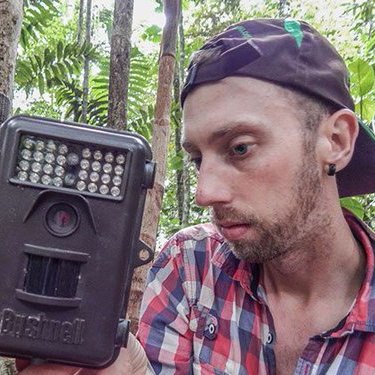 Andy Whitworth
Andy Whitworth
4 July 2016 12:00am
Wildlife Crime Tech Challenge Accelerator Bootcamp
 Sophie Maxwell
Sophie Maxwell
24 June 2016 12:00am
Project Feedback Wanted: Building Low Cost Cameras
2 March 2016 9:59am
11 May 2016 6:27pm
thanks for this very interesting post! i was also trying to develop an inexpensive camera trap but with not good results. i think the use of a PIR sensor can give more battery life than motion detection via software. Can you give more details about the components you used please?
Thanks
Paolo
20 May 2016 11:07pm
Hi Sorry been away, I'll list more about parts etc.. In the mean time the Pi Zero has just had an upgrade..
http://petapixel.com/2016/05/19/5-raspberry-pi-zero-now-camera-compatible/
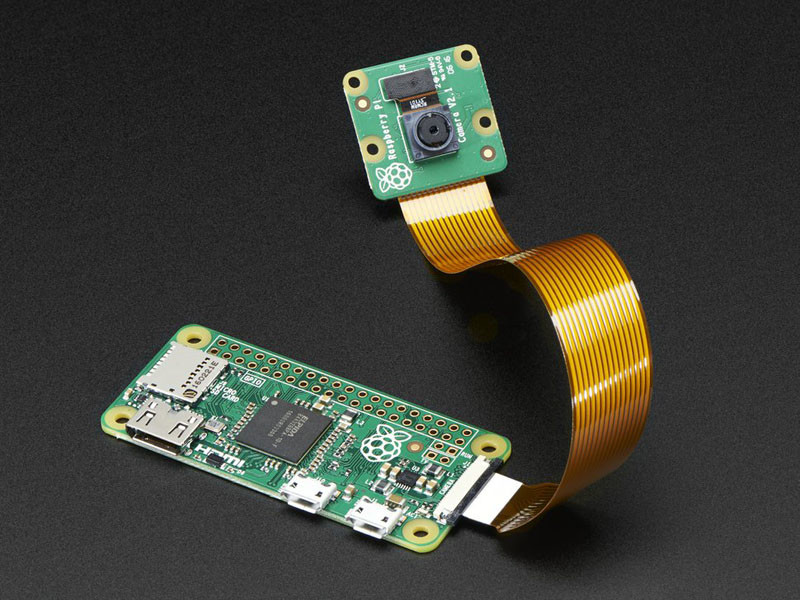
TEAM Network and Wildlife Insights
 Eric Fegraus
Eric Fegraus
28 April 2016 12:00am
Is Google’s Cloud Vision useful for identifying animals from camera-trap photos?
 Aditya Gangadharan
Aditya Gangadharan
20 April 2016 12:00am
Disruptive Technology: Embracing the Transformative Impacts of Software on Society
10 March 2016 12:00am
[ARCHIVED]: Smithsonian Course: Camera Trapping Study Design and Data Analysis for Occupancy and Density Estimation
3 February 2016 2:25pm
Wildlife Crime Tech Challenge: Winners Announced!
22 January 2016 12:00am
The Social Lives of Conservation Technologies and Why They Matter
 Chris Sandbrook
Chris Sandbrook
2 November 2015 12:00am





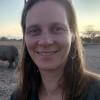
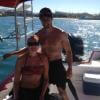




































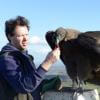

5 October 2016 3:37pm
@heidi.h Definitely a valid question. It looks like they have it connected to a zooniverse project, which means they are using citizen science to not only set up and maintain the cameras, but to process the data. Pretty neat.
What we do
Our main task is to get our trail camera volunteers up and running with equipment and training. Volunteers can now apply to host a camera in Wisconsin survey blocks where they have access to land (visit dnr.wi.gov, keyword "Snapshot Wisconsin" for more information). Trail camera volunteers are in charge of setting up a camera and retrieving its SD card (containing saved photos) at least four times per year. Volunteers then send the photos to WDNR to be posted on Zooniverse. By the end of 2017, we expect to have enough cameras for > 2000 volunteers to participate in the project -- these cameras will produce millions of photos each year!
While we get our trail camera volunteers set up, we have plenty of other photos to show the Zooniverse community. WDNR staff have placed over 300 trail cameras in two areas of the state now home to a species of elk (Cervus elaphus) formerly abundant throughout North America. Elk were extirpated from Wisconsin in the 1800s due to overhunting and habitat loss. Reintroduction efforts began in 1995 and continue today, and we're curious to know how the elk are doing! Classifying the photos from the elk reintroduction areas will give us great information about population size and distribution, and examine how elk presence overlaps with that of wolves--natural predators of elk.